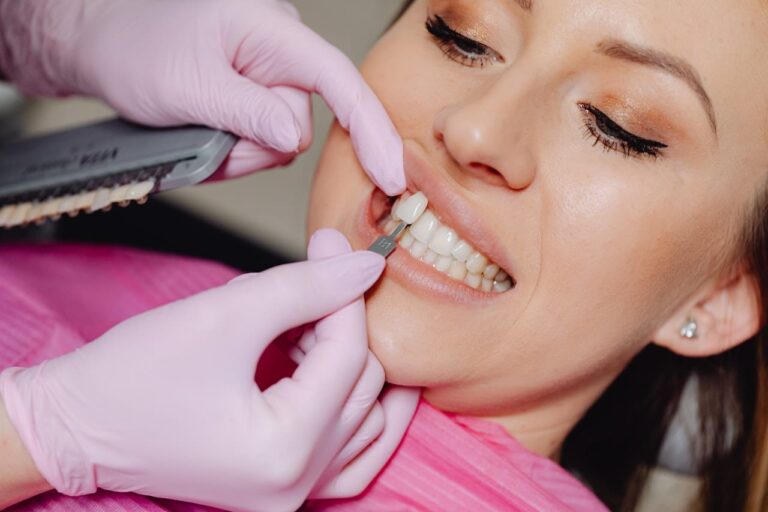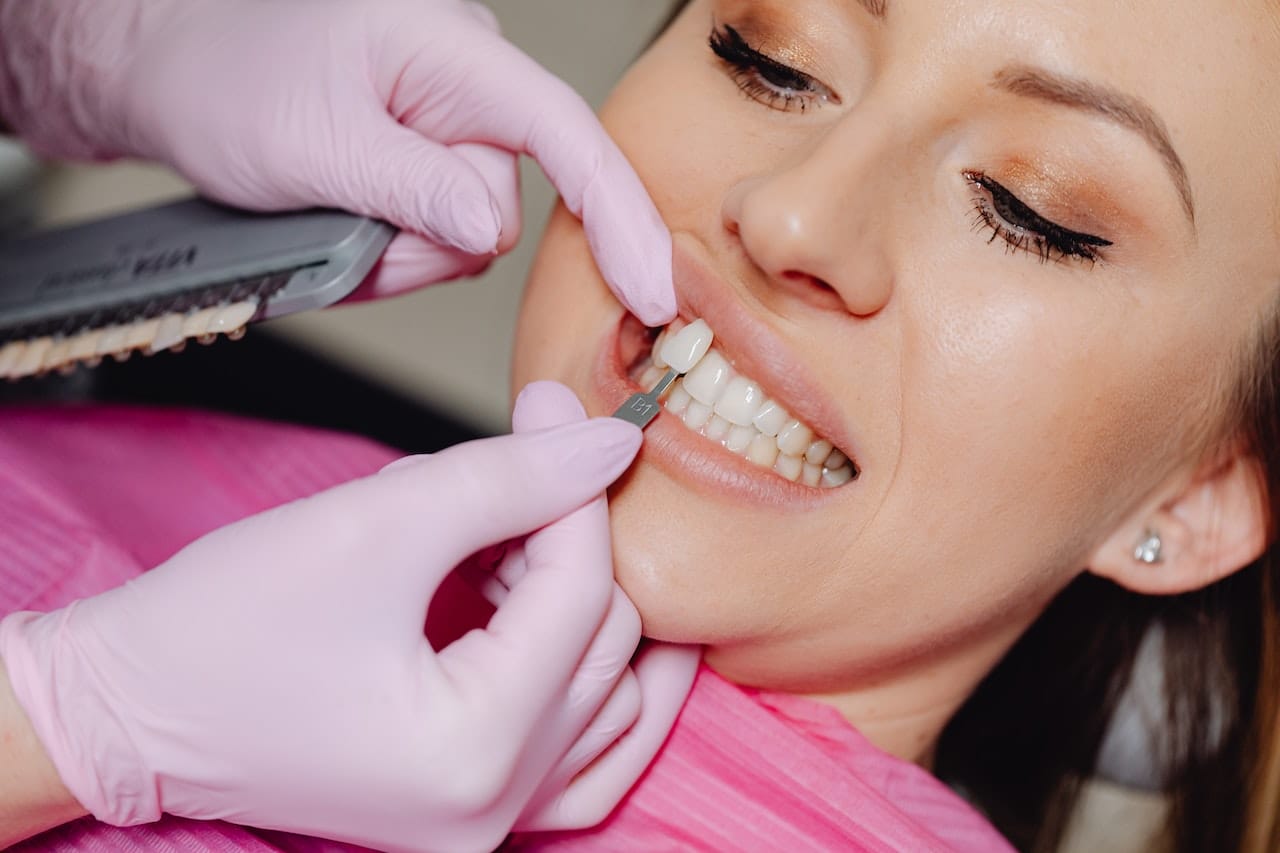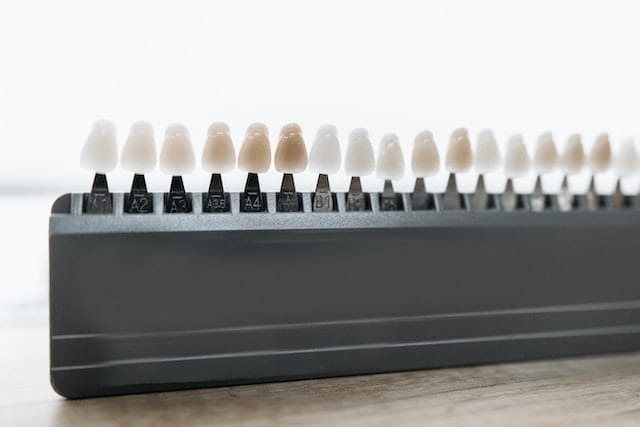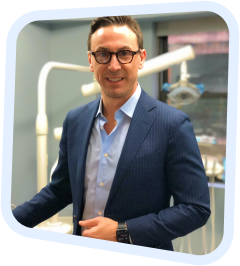Deciding to get veneers is the first step toward the confident, beautiful smile you’ve always wanted. The second step is choosing the type that’s right for you. You’ll have to decide between composite or porcelain veneers. But how can you tell which one to choose?
What Are Porcelain Veneers?
Dental porcelain veneers are made of porcelain laminate and are wafer-thin coverings for teeth. They are the most durable option available.
Once cemented to your teeth, a porcelain veneer is irremovable, and it typically takes two visits to complete the procedure.
During the first visit, your dentist will reshape your enamel to hold the veneer. Then, take an impression of your teeth with polyvinyl siloxane and decide on the correct shade based on numerous factors, including skin tone, the shape of the face, or age, and forward the results to a lab. While this happens, you will wear temporary acrylic veneers – which will be similar to the final results – allowing you to have predictable final results!
Upon your second visit, your dentist will remove the temporaries and try the final porcelain veneers, checking for size, shape, and fit.
Advantages of Porcelain Veneers
Longevity
Porcelain veneers are a more durable alternative to composite resin, making porcelain a superior material choice (regardless of developments in resin technology).
When cared for properly, porcelain veneers can last up to 10–15 years or more, but composites often only endure between 5 and 7 years on average due to chips, breaks, and discoloration.
It Looks Like Natural Teeth
Porcelain veneers are the next best thing to natural teeth in cosmetic dentistry. To some extent, porcelain’s translucency resembles tooth enamel.
The material’s durability and the glaze on top make it resistant to fading and breaking.
Drawbacks of Porcelain Veneers
One major drawback of porcelain veneers may be the high price tag. But a more natural-looking and durable product is worth the extra cost. What’s more, there are payment options you can explore.
Unlike composite veneers, you don’t need to handle porcelain veneers with extreme caution, but you should still take the usual precautions to protect them from damage. And if your porcelain veneer ever chips or splits, have it replaced.
What Are Composite Veneers?
Composite veneers, also called composite resin veneers, are made from a mix of natural and inorganic materials, such as resin, fillings, and a binding solution. Composite veneers, like their porcelain counterparts, are a durable repair option.
There are two types of composite veneers:
- Direct composite veneers: This is a less intrusive composite veneer, and your dentist can fix it in just one office visit. It involves applying the composite resin material directly on your teeth after prepping.
- Indirect composite veneers: These composite veneers are custom-made outside your mouth in your dentist’s office or lab. It requires you to wear temporary veneers before they’re ready. When the veneers are ready, your dentist will bind them to your teeth with an adhesive. If you’re looking for a veneer alternative to porcelain, look no further than indirect composite veneers. Indirect composite veneers are more expensive and long-lasting than direct composite veneers.
Benefits of Composite Veneers
Low Cost
Composite veneers have several benefits over porcelain ones, with price being the most obvious.
So, when considering composite vs porcelain veneers, keep in mind that composite veneers cost less. How much you pay depends on many things, but generally, you can expect to pay anywhere from $250 to $1,500 per unit.
Convenience
Composite veneers are easier than porcelain veneers because you can complete the procedure in one visit.
It involves direct bonding as the dentist applies the tooth-colored resin directly onto your teeth, then shapes and molds it to perfection.
After using UV light to harden the molded resin, your dentist adds it to your tooth and shapes it to get the look you want. After the resin solidifies, you must polish it from time to time to make the surface look more like natural teeth.
Drawbacks of Composite Veneers
When compared to porcelain veneers, composite veneers have a shorter lifespan. And while they might appear natural at first, they may end up looking unnatural after some time due to their susceptibility to stains and discoloration.
Composite vs. Porcelain Veneers: Which Is Better?
Speak with your dentist about your aesthetic goals and think about the pros and cons of each before choosing composite vs. porcelain veneers.
Composite veneers are the best choice to make your teeth look better without spending too much money.
Porcelain veneers are an excellent option if money is not a worry or you have a major cosmetic issue. It’s also the best option for a realistic and long-lasting cosmetic solution.
Get Dental Veneers in New York City
You don’t have to think too hard to decide which veneer to choose. Let your dentist help you decide. They’ll also answer your questions. If you’re in New York City and looking for a dentist to talk to about veneers, schedule an appointment with us.
At Advanced Dental Arts, we understand the differences between each type of veneer and can advise you on which to choose. We’ll evaluate your situation, discuss your goals, unique needs, and budget and recommend the best veneer treatment for you.
Book an appointment with us today!








